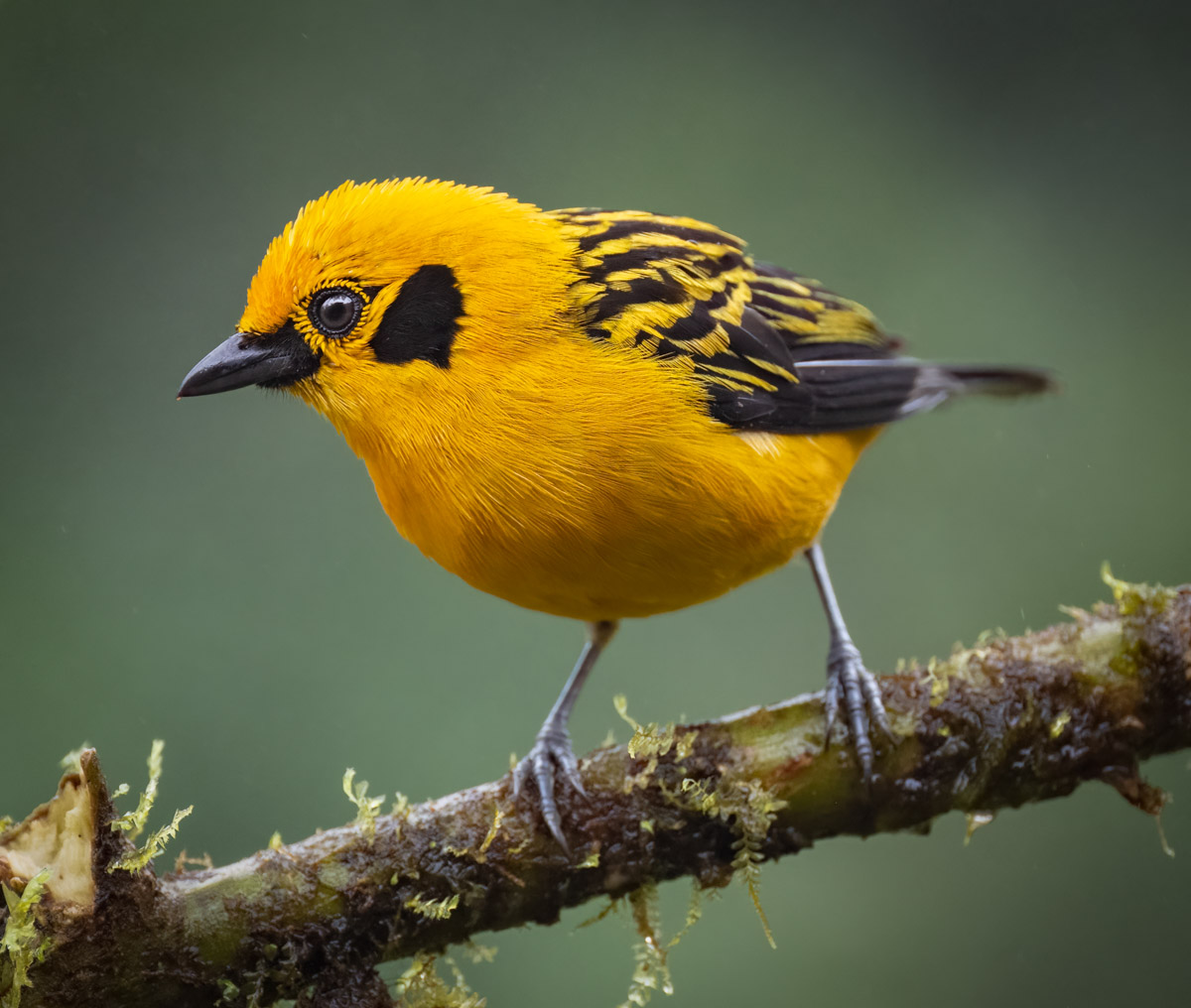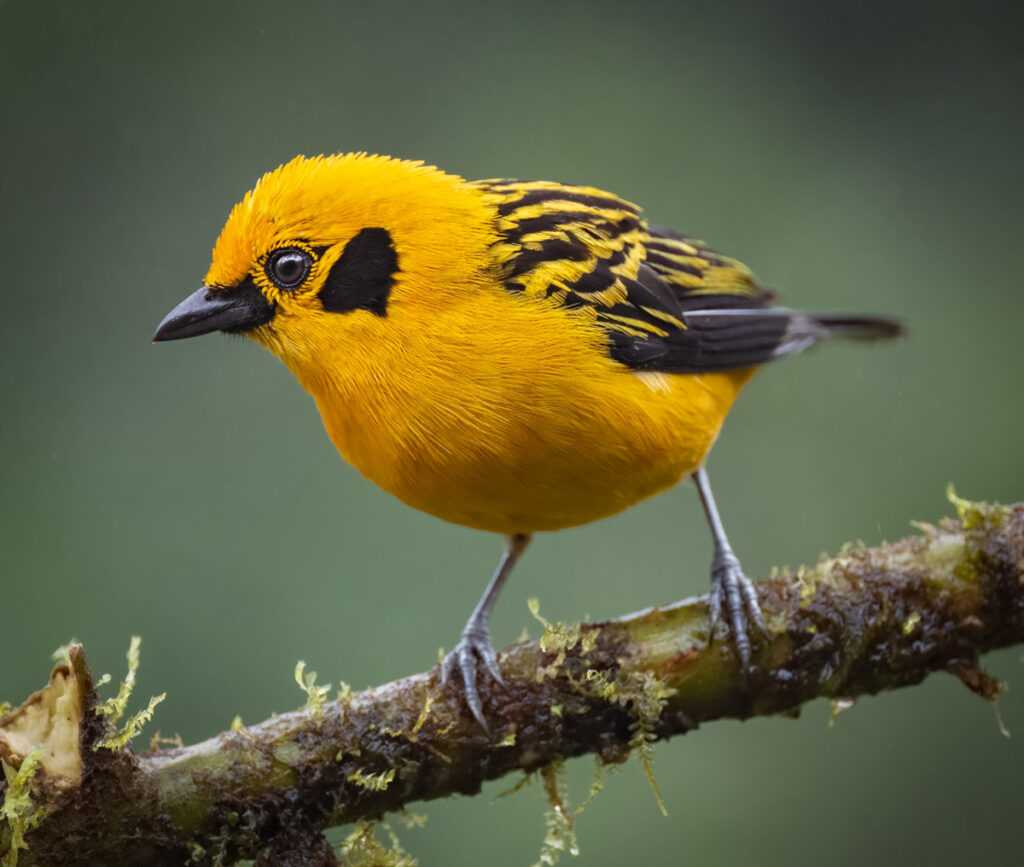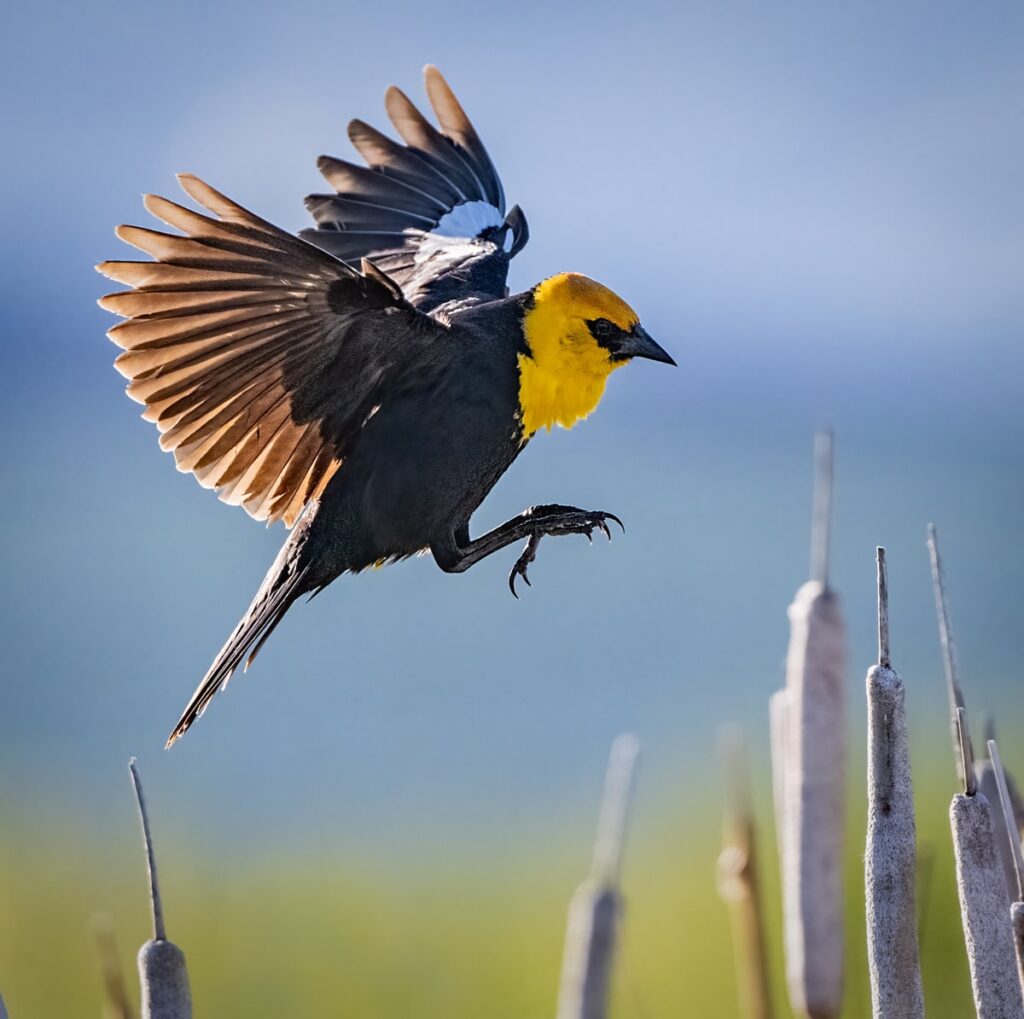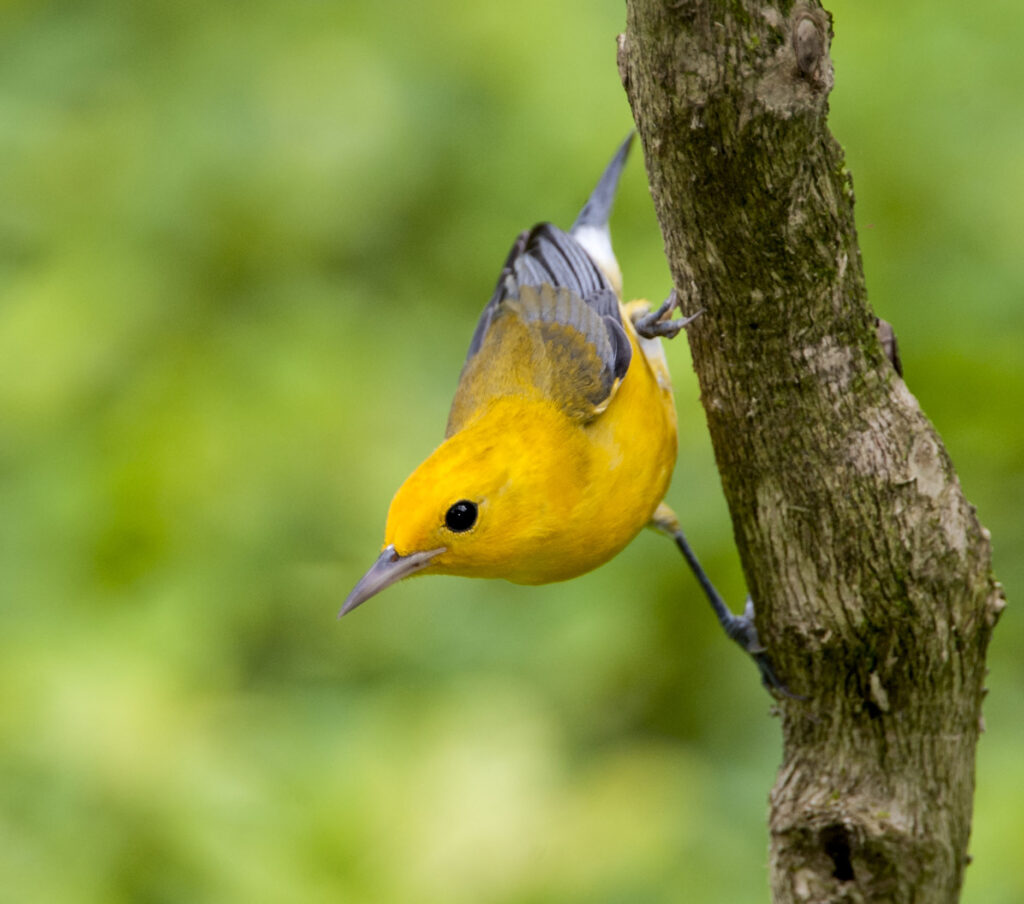
Plumage color in birds serves several purposes: helping camouflage birds in their natural habitats to evade predators or stand out during breeding season and the all-important mating rituals. Birds use plumage to identify their own species or communicate territory lines to same-species members. Given there are over 10,000 known species in the world, it’s little wonder there is a vast diversity of plumage colors in birds. Some can be seen in practically every species, whites, browns, blacks, and grays, and there are those colors that only a relative few species have. In today’s blog, we look at some examples of birds photographed during travels all over the world, showcasing the vibrant and glorious yellow color in their feathers.

The colors of bird feathers rely on two things — pigments and light. These two components either act independently or in combination to produce the color that we see when we look at a bird. The most common pigment in bird feathers is melanin, which is created as the body and feathers grow, and this pigment lends itself to the neutral and earthy tones of bird plumage. It also influences the color of those feathers that contain pigments called carotenoids, ingested via food, and porphyrins, which are produced by a unique modification of amino acids. Light contributes to the existence of structural coloration – when white light hits the feathers, it is either refracted or reflected back to our eyes depending on the way the feather is made. These factors all give rise to the seemingly never-ending palette of hues we can find in birds.
Yellow plumage adds a touch of sunshine to a bird’s appearance, frequently showing itself as streaks, stripes, bars, or caps and ranging in brightness from glorious cadmium and daffodil to duller olives and ochres. And then there are those birds who wear their yellows all over their bodies. We associate the color yellow with sunshine, optimism, hope, joy, energy, and happiness. Seeing a yellow bird surely does brighten our days and even our souls.
The Golden Tanager is a tropical bird native to the forests of South America, and as its name suggests, these birds are adorned in radiant shades of yellow. Males exhibit a striking golden-yellow coloration on their bodies, wings, and tails, contrasting beautifully with their jet-black wings and masks. This vivid coloration serves as a visual signal to attract mates and establish territorial boundaries during breeding season. The bright yellow plumage of the Golden Tanager is a perfect example of carotenoids absorbed from their diet of fruits and insects, and because their stunning golden hue is so bright you can often spot them hopping about in groups plucking their food from branches. Owen photographed this male while on a trip to Ecuador.

Yellow-headed Blackbirds may not have as much yellow going on, but what they do have is that remarkable hood stretching from nape to chest, a dazzling pigment-rich shade of canary-yellow, contrasting wonderfully with their black body and wings. This stark coloration is crucial in species recognition and mate attraction. The intense yellow color is again attributed to carotenoid pigments acquired from their diet, with wetlands being a primary food source for these birds. This visually striking combination can be most effective when witnessing a flock of birds forage in a rolling formation, where birds fly from the back to the front of the flock to feed.

The Prothonotary Warbler is a small migratory songbird from the New World family of warblers and in breeding season it can be found in southeastern Ontario and all over the eastern US states species, then in winter they will fly down to the West Indies, ad Central and northern parts of South America, particularly around mangrove swamps –where they are also known as golden swamp warblers. Their somewhat unusual other name derives from the robes worn by the papal clerks in Roman Catholic establishments, called prothonotaries; the second part of their scientific name is citrea, referring to the yellow hue Citrine. The male Prothonotary Warbler dons a vibrant lemon-yellow coat, while the female exhibits a more subdued shade of yellow. Their gorgeous yellow feathers can illuminate the dim habitats they frequent, making them a delight to observe, and yet also makes them surprisingly hard to detect among the leafy foliage of their chosen habitats. Owen was fortunate to capture this one on a visit to the Canopy Tower, Panama before it flew into the lowland rainforests of the Soberania National Park.
Whether it’s for attracting mates, species recognition, or camouflage, the presence of yellow plumage in these bird species beautifully showcases nature’s vibrant palette. Think about the birds you see and take note of flashes of yellow you can see among the colors of your own neighborhood birds.


